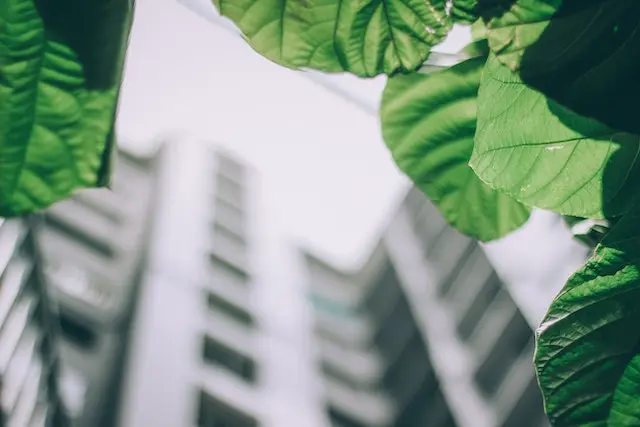What is the Living Building Challenge?
The Living Building Challenge is a visionary program that sets the highest sustainable design and construction standards. Developed by the International Living Future Institute, the program involves a certification system beyond traditional green building standards. It requires buildings to operate entirely on renewable energy, collect and treat all water on site, and prioritize the health and happiness of the people who occupy them.
This challenge pushes the boundaries of what is possible in the built environment. It provides a roadmap for designers, builders, and owners to create buildings that are not only environmentally responsible but also restorative and regenerative.
What is the purpose of the Living Building Challenge?
The purpose of the Living Building Challenge is to promote and encourage the design and construction of regenerative and restorative buildings. It aims to go beyond just being environmentally responsible. By doing that, it sets the highest standards for sustainability, requiring buildings to be net positive in terms of energy, water, and waste and prioritize the health and well-being of their occupants.
Intending to promote environmental, social, and economic benefits, the program helps create a built environment that is sustainable and contributes to the health of the planet and its inhabitants. The Living Building Challenge serves as a roadmap for designers, builders, and owners to create buildings with a positive impact on the world.
Understanding the concept and its origins
Originating in 2006, the Living Building Challenge was a response to the limitations of traditional green building standards. These traditional standards often focus solely on reducing a building’s environmental footprint. The Living Building Challenge, on the other hand, provides a more comprehensive approach to sustainability. It incorporates environmental performance and social, cultural, and economic factors. Today, the program inspires and drives innovation in the built environment, promoting a vision for a more sustainable and equitable future.
What is the difference between LEED vs. Living Building Challenge?
Leadership in Energy and Environmental Design (LEED) and the Living Building Challenge are sustainability certification programs for buildings. But, they differ in their approach and focus.
LEED is a widely recognized and commonly used standard for green buildings. It focuses on reducing the environmental impact of a building through a variety of measures. These measures include energy and water efficiency, materials selection, and indoor environmental quality. The LEED certification system provides a framework for designing and constructing more sustainable buildings. However, it does not require them to be net positive regarding energy, water, or waste. These same differences largely apply to BREEAM and ESG Green Buildings as well.
In contrast, The Living Building Challenge sets much higher standards for sustainability. It goes beyond just reducing a building’s environmental impact. As previously mentioned, it also requires buildings to exhibit net-positive performance in energy, water, and waste management while focusing on the well-being and happiness of those who occupy them. The program takes a more holistic approach, incorporating environmental performance and social, cultural, and economic factors.
Some examples of sustainable buildings that have followed the program
One of the most inspiring aspects of the Living Building Challenge is the diverse array of projects that embrace its principles and standards. This wide array of projects meeting the Living Building Challenge standards can do so thanks to the ease of use with The Seven Petals criteria and The Red List of materials. These two assets show how projects can meet the Living Building Challenge and bring sustainability to their buildings.
The Seven Petals
The Seven Petals was named after the seven petals of the program’s flower symbol. Each petal represents a different aspect of sustainability. They cover the sustainability aspects of the place, water, energy, health and happiness, materials, equity, and beauty.
With these seven petals, buildings have a model for sustainable design and construction. They incorporate a range of cutting-edge technologies and strategies to minimize the environmental impact of a building and promote the health and happiness of its occupants. From solar panels and rainwater collection systems to green roofs and natural ventilation systems, The Seven Petals showcase a clear path toward meeting the standards of the Living Building Challenge.
The Red List
The Red List of materials and substances that should be eliminated from building construction is another remarkable asset that showcases the value of the Living Building Challenge. It offers a comprehensive inventory of materials and chemicals with potential negative impacts on human health and the environment.
As a key component of the Living Building Challenge, it goes beyond simply reducing a building’s environmental impact. Instead, it focuses on promoting human health and well-being. The Red List includes many materials, such as chemicals commonly used in building products (lead, mercury, and cadmium, to name a few). By eliminating these harmful substances, the Red List helps to create a safer and healthier built environment for occupants.
Is it the greenest building standard?
The Living Building Challenge is considered one of the greenest building standards. Its multidisciplinary approach to sustainability makes the Living Building Challenge unique. It considers not only the environmental impact of a building but also its impact on human health and well-being. This makes it a popular choice for creating truly sustainable and healthy buildings. It also requires a higher level of commitment from designers, builders, and owners, as it sets more stringent requirements for sustainability and performance over time.
However, it’s worth noting that the “greenest building standard” concept is subjective and open to interpretation. Other building standards, such as Passive House and the Living Building Challenge’s sibling program, the Living Community Challenge, also set high standards for sustainability. Ultimately, the greenest building standard will vary depending on the specific project and the goals of its designers, builders, and owners.
How Certify can help get your building certified
By connecting digital twins (including sensors and devices) to the actual physical building, our app Certify streamlines and automates the building certification process. This eliminates the risk of manual data entry errors and reduces costs and certification lead times. With the help of meters and sensors in ProptechOS, you get visibility on performance and potential errors in advance so that the certification outcome is known ahead of time and improvements can be started before and not after the grading or certification is done.

Per Karlberg
Per Karlberg, a distinguished technology executive, demonstrates deep expertise in the nexus of real estate, technology, and ESG. Holding advanced degrees from Lund University, and with key roles as CEO of our company and Co-Founder of ProptechOS, he has shaped the proptech field through significant contributions to real estate technology advancements. His instrumental work in co-authoring “The realestatecore ontology” has facilitated digital transformation and ESG breakthroughs in the real estate sector.
Read his full bio and information here.

